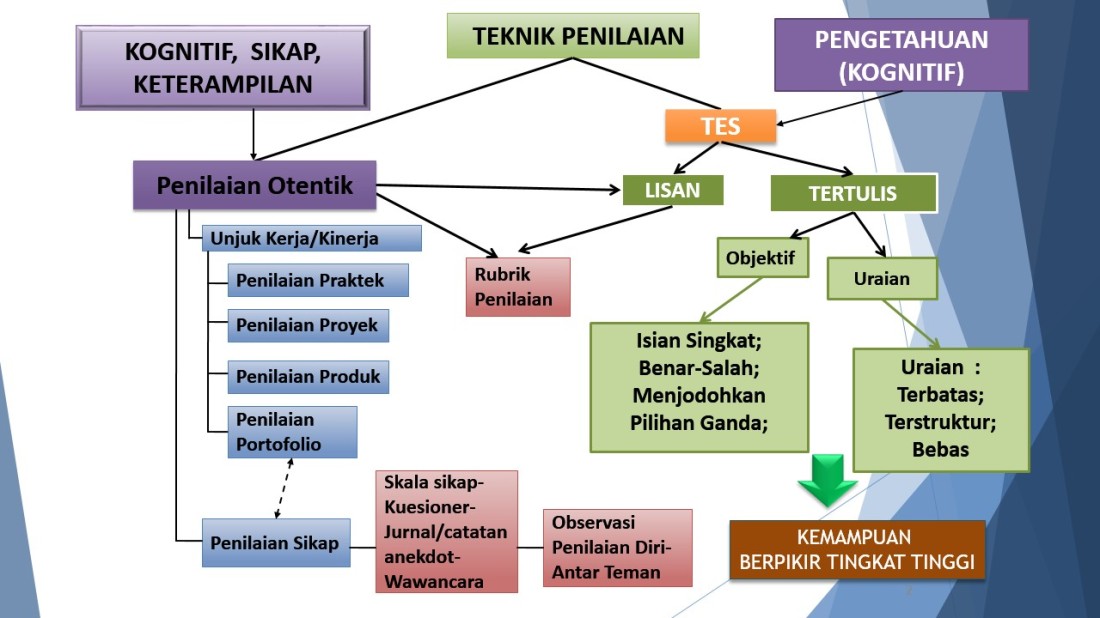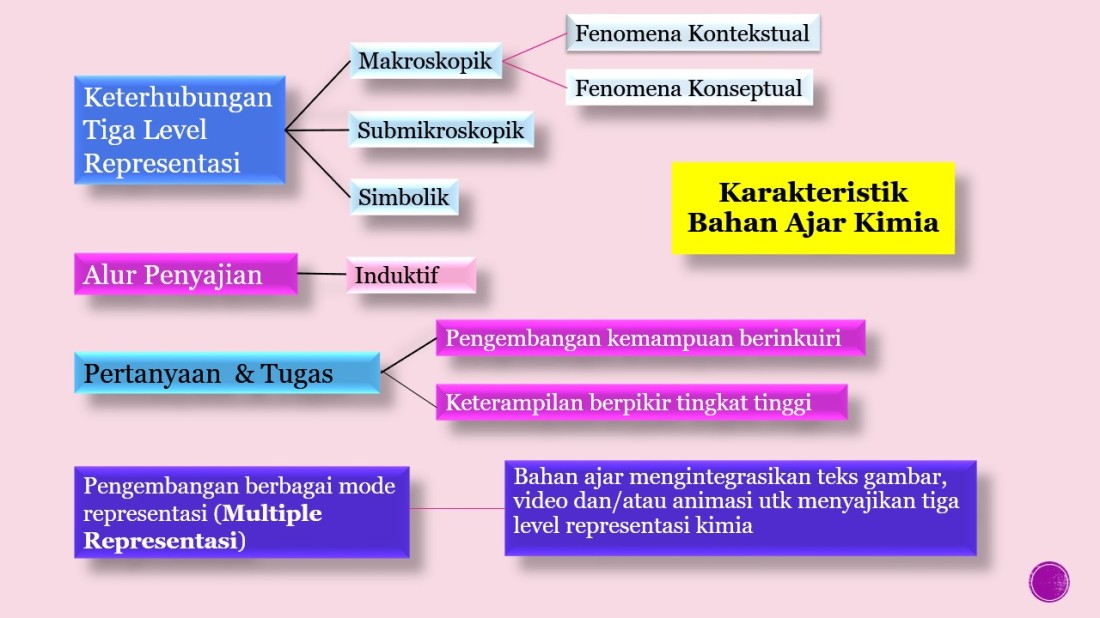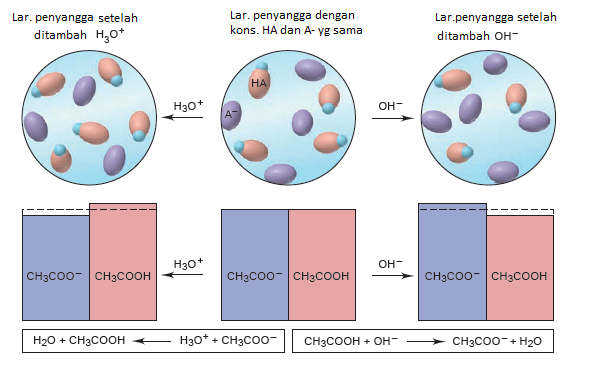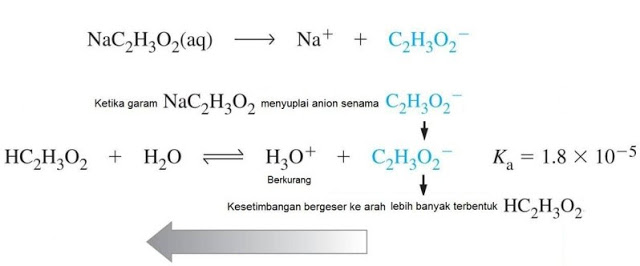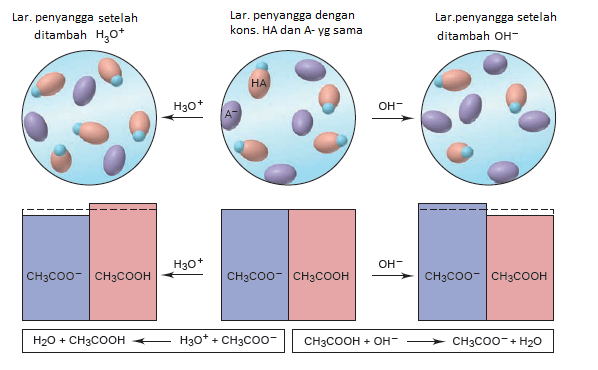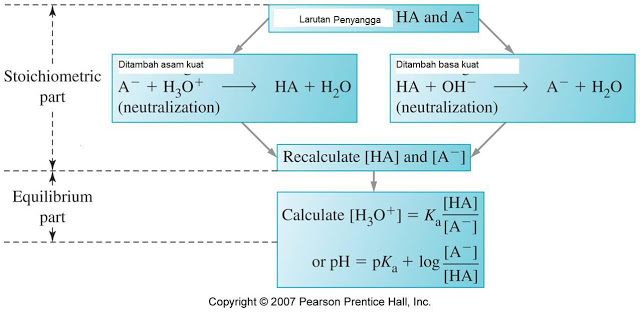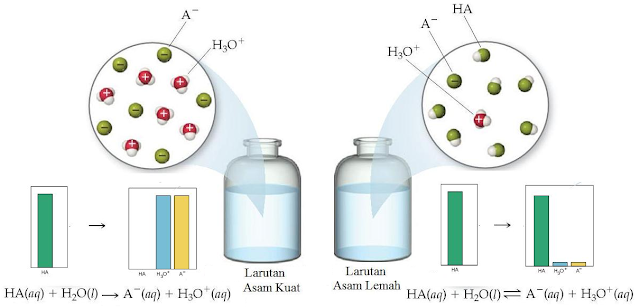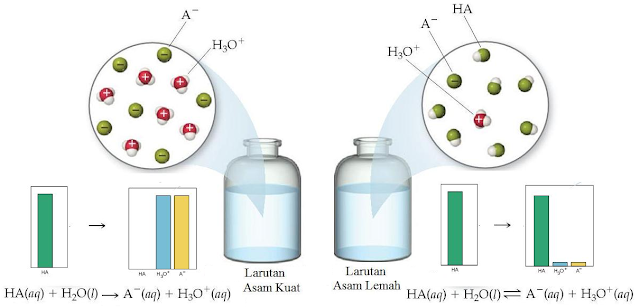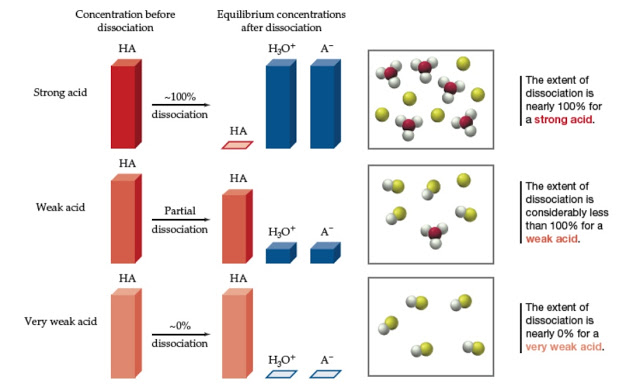Ida Farida Ch.1, Lilik Latifah2, and Cucu Zenab Subarkah1
1Program of Chemistry Education, Sunan Gunung Djati Islamic State University,
2 Madrasah Aliyah Negeri Cipasung Kabupaten Tasikmalaya, Indonesia
Abstract:
This paper reports the implementation of Lesson Study on Chemistry subjects at Madrasah. At the planning stage, learning instruments were developed, and a model teacher was selected. Afterward, a learning scenario was designed and teaching materials were selected by a working group of Chemistry teachers. Open Class was carried out in Grade XI where most of its students tend to be passive and less motivated. The result of classroom observation reveals that most of the students were actively involved in the teaching and learning process. The students’ interaction with group work to execute practicum tasks is considered good. However, several students in each group did not get a good chance to actively engage in learning activities. Male students tend to be more active than female ones. Yet, they paid less attention to the concepts presented than female students did. The teachers’ efforts to facilitate learning were quite good. On reflection, a model teacher was aware of the change of behavior on the part of the students after using a different method and learning atmosphere from the routine. However, a few students did not learn optimally since the member of each group was so big. The number of worksheets, learning instruments, and chemical substances were not enough to support their learning. Upon the implementation, the model teacher stated her conviction on the change of learning atmosphere on most of the students: they were more courageous to ask questions, more independent on initiating learning activities through discussions, and more collaborative than before.
Keywords:
Learning Improvement, Learning Atmosphere, Lesson Study.
1 INTRODUCTION
The innovation and improvement of the quality of education is an ongoing process and involves all components of education. Improving the quality of education can begin with improving the quality of implementation of teaching and learning process at class. Teachers who have high creativity and innovative in designing the learning process will be able to encourage and facilitate the students of learning so that students can achieve cognitive competence, skills, social and moral.
One attempt to increase the quality of the process and learning outcomes is through the Lesson Study activities. These activities carried out to overcome the disadvantages of teachers coaching model through conventional training which is not based on real-life problems in class or top-down. As stated by Murata (2011): lesson study places teachers at the center of the professional activity with their interests and a desire to better understand student learning based on their own teaching experiences. The idea is simple: teachers organically come together with a shared question regarding their students’ learning, plan a lesson to make student learning visible, and examine and discuss what they observe. Through multiple iterations of the process, teachers have many opportunities to discuss student learning and how their teaching affects it.
Generally, the teachers at Madrasah Aliyah Negeri (MAN) Cipasung, Tasikmalaya District have been following the coaching profession, and even most of the teachers have been certified as professional teachers. However, they have problems how to create a conducive learning environment for students and motivate the student to active learning. Collaboration between teachers to share experiences in order to improve the quality of teaching is not well established. They have not been carrying out activities Lesson study as a whole, even though they have known about that from various training.
Implementation of Lesson Study activities carried out by the Program of Chemistry Education, Sunan Gunung Djati Islamic State University in order to give public service as an effort to share experience and build collaboration to improve quality of teaching in school/madrasah. It is expected that the problems faced by teachers in classroom practice could be identified and then be acquired alternative solutions to solve problems.
One of the problems faced by Chemistry teachers was how to carry out effective teaching and learning process to encourage students to be able to develop thinking skills and scientific work. So far, the teachers have been working to facilitate the students to active learning, but there is a tendency the students lack the motivation for learning and remained passive in the learning process.
This paper describes Lesson Study has been carried out with a focus on how the efforts of the teacher in creating an atmosphere of learning and student interaction on the learning process.
2 METHOD
Lesson study is conducted in three phases at a different time. In the initial stage: to disseminate the activities of lesson study that involved teachers of Madrasah Aliyah in Tasikmalaya District who joined the Working Group of Madrasah. The planning stage: to design scenarios of learning, to determine a schedule of open class and teacher model. However, the design of learning scenarios cannot be discussed in detail at an early stage. So it was agreed to discuss via email, because of time constraints and long distances to meet.
In the next stages: to conduct activities in an open class that involved nine participants: four college teachers and five teachers (from two Madrasah in Tasikmalaya district). One of these teachers volunteered as a model teacher. In order for the process of the implementation of the open class in accordance with the expected, the observers are given key questions as a guideline and regulations of observation. Such guidance is necessary because most of them are never do classroom observation.
The third stage in Lesson Study activities is a reflection. Reflection of learning activities conducted immediately on the same day after the open class activity. First, the teacher models expressed impressions in implementing the learning. Furthermore, all of the observers submit comments based on the fact obtained from the observations. One of the lecturers act as a resource person, she gives a scientific view regarding instructional content and other important matters that observed during the learning process.
3 RESULTS AND DISCUSSION
The process of learning carried out in the laboratory. Before doing open class, the model teacher explained the lesson plan. Learning is done by lab work method with the aim that students are able to analyze factors affecting the rate of reaction. Through learning, students are expected to developing aspects of science process skills: observing, using tools and materials, measuring, recording, interpreting and inferring the data. She stated that 36 students of class XI are students at regular classes taught by her. These students often tend to be passive in the learning process.
Students were divided into five groups consisting of seven students. There were three experimental procedures should be carried out each group of students, i.e. effect of concentration, temperature and large surface area on reaction rate.
Figure 1 sketch the position of students sitting in each group at the laboratory. From the images presented, it can be seen that the male students fewer than the female students. Each group consists of 6-8 students are students who are not evenly distributed between boys and girls. The number of students in each group is too much and not evenly distributed.
Figure 1. Students position in each group at the laboratory.
At the beginning of learning, teachers review the previous learning materials. Then the teacher gives an explanation of the learning objectives and distributed worksheets. The teacher briefly provides guidance regarding lab procedures. Figure 2 and 3 show open class activities: the observers were observing the learning process.
Figure 2. Open class activity: student interaction in the learning process
The equipment and chemicals required for each group available on the desk at front of the laboratory. Two students from each group assigned to take the equipment and chemicals.
Figure 3. Open class activity: The observers were observing the learning process
The observers collecting data that focuses on seven key questions:
- How do the process of student learning, whether students completely have learned about the topic being taught?
- How do the interaction between students?
- How do the interaction between students and teachers?
- How does the process of exploration of the student to understand the subject matter?
- When there are students who did not learn well, what caused and how to solve it?
- How does the effort of teachers to encourage students to become actively engaged in learning?
- What are the benefits or valuable lessons that you (observer) can get today?
Based on collected data record from observers, not all observers provide complete records according to the key question in observation sheet. The following is a summary of the table describing reflections of the observers based on the key questions
Table1. Summary reflections of the observers for each key question
| Key question |
Summary reflections |
| 1 |
Most of the students were actively involved in the teaching and learning process. Several students in each group did not get a good chance to actively engage in learning activities.
Male students tend to be more active, but less attention to the concepts presented than female students did. |
| 2 |
There are divisions of student tasks in groups 1, 2 and 4, i.e.: to take the tools and chemicals, experimenting, reading procedures, record data and lab reports. They take turns doing the task. In groups 3 and 5, female students tend to dominate the worksheet; they read the procedure carefully, write experiment data and answer questions in a worksheet, whereas male students doing the experimental procedure but did not seem to think interpreting experimental data. The discussions tend to occur among female students. Only male students in groups 1 and 2 which participate actively in discussions, male students in other groups tend to be quiet and just accept the result of a discussion. |
| 3 |
In each group, partly of female students ask questions to the teachers about the procedures (i.e.; the clarity of when the recording time is stopped, how the correct way to use a stopwatch and thermometer) and things that they are poorly understood. The teacher gives the answer that directs students to read more carefully worksheet and demonstrate again how to use the tools. |
| 4 |
Students tend to focus on the measurement of time. They ignore the other characteristic feature accompanying reactions. Some students in groups 2 and 4 disagree about the use of pedestal marked with a cross. They disagreed with determining when time measurement terminated in accordance with the disappearance of a cross (in the experiment the effect of concentration on the rate of reaction).
In the other groups, observations and measurements for the same experiment repetition are not performed by a single person. As a result, they get data less accurate and generate confusion to infer.
Most students seem still having trouble to answer: why are concentration, temperature and large surface area influence to reaction rate. They have not able to connect the concept that has been studied previously (collision theory) with the results of the experiment already done. |
| 5 |
A few students tend to just sit and watch it. Occasionally they helped but just sit in their seats and looked confused. It is recommended before they have conducted practicum, the teacher confirms distribution of tasks every person within the group and rewards to students who capable of doing a good job. It is expected that the teacher’s action could raise the active participation of the student.
Not all students get a worksheet. Only two worksheets are available for each group. Each student should receive a worksheet in order to understand the procedures and have any record of the results of the experiment.
The experimental data should be written on the board to discuss together and then students could review and compare the findings with other groups.
Learning materials need to be linked contextually (with examples in daily life) so that students can take benefit for life.
Students should give a chance to record whatever they learned that day so they can be re-learning that at a later time.
Students should be encouraged to think to relate the phenomena that have been observed with the collision theory in order to understand why the factors that they observe influence on reaction rate. |
| 6 |
The teacher walks around to each group to ensure that students work well in accordance with procedures. She was trying to encourage students to participate actively in doing tasks, in order to achieve the learning objectives. She repeatedly gives examples of how to use the tool and try to encourage students to think for linking experimental findings with the questions to be answered, students. However, such guidance has not been addressed individually to some students who have difficulty. |
| 7 |
The observers getting important lessons from that were observed during the open class. They become more knowledgeable about a particular subject (content) and gain valuable knowledge of how students’ learning process. They learn to listen to students ‘ideas and to see the students’ development. They can also better understand what actions can be potentially inhibiting the progress of student performance. |
On reflection, a model teacher was aware of the change of behavior on the part of the students after using a different method and learning atmosphere from the routine. According to the model teacher, the concept of reaction rate is usually taught by the lecture method. The use of lab work method in the teaching of the factors which influence the rate of the reaction has never done, due to time limitations. She felt a change in the atmospheres of class. Students usually passive and some tend to fall asleep at the classroom. Lab activities made them more active. However, she felt there are still many students who have not really understand and skillful in lab work.
The result of classroom observation reveals that most students were actively involved in teaching and learning process. However, several students in each group did not get a good chance to actively engage in learning activities. Male students tend to be more active than female ones. Yet, they paid less attention to the concepts presented than female students did. The teachers’ efforts to facilitate learning were quite good. It is suggested; the teacher more carefully planned classroom management strategy and provides instructional tools suitable for such students.
Besides of the observers getting experiences and knowledge, they also have the opportunity for self-evaluation. By observing the teacher models, at least the observers would question themselves, and feel what they have given to students during the learning process that are not observed by others. However, through activities of open class, observers, as well as teachers, become more aware of how the actions of teachers a large influence on the progress of performance of students in process of learning. This is consistent with Bell’s et al (2008) statement that: teachers who participated in the lesson study had opportunities to develop knowledge by predicting students’ responses and questions. In addition, the teachers who discussed the targeted content areas and not just the implementation of the lesson revealed a deeper understanding of teaching.
A few months after the implementation of the open class, the teacher was asked to convey further impact the open class. She expressed the Madrasah teachers felt the change an atmosphere of student learns in the classroom. Students in the classroom model once tended to be passive, increased motivation, interest and learning independence. Students took the initiative to do the exercises without having to be assigned. They also attempted to solve own problems. If they are difficult to solve the problem, they are not hesitating to ask.
Collaboration between students at classroom get better: they are helping one another and discuss the subject matter which is not yet understood, then passionate asking teachers to give guidance on learning outside teaching hours. A surprising fact was the average value of chemical subjects increases rapidly until it reaches the second position after the average value at excellent class.
Presumably the impact of changes atmosphere of learning in the class, because students were getting treatment and reward different from other classes, thus encouraging them to rise to catch up with other classes. In addition, the results of reflection, a model teacher get a lot of positive feedback or input from other teachers. This triggered a model teacher to attempt implementing more varied learning strategies that can realize qualified the learning process. The teacher suggested lesson study should be a routine agenda carried out at school/madrasah.
The case shows that the lesson study has the potential to build learning communities within schools and ultimately result in instructional improvement and increase in teachers’ knowledge with a focus on the student and the content (Meyer & Wilkerson, 2011:25).
4 Conclusions
The result of classroom observation reveals that most of the students were actively involved in the teaching and learning process. The students’ interaction with group work to execute practicum tasks is considered good. However, several students in each group did not get a good chance to actively engage in learning activities. Male students tend to be more active than female ones. Yet, they paid less attention to the concepts presented than female students did. The teachers’ efforts to facilitate learning were quite good. On reflection, model teachers were aware of the change of behavior on the part of the students after using a different method and learning atmosphere from the routine. However, a few students did not learn optimally since the member of each group was so big. The number of worksheets, learning instruments, and chemical substances were not enough to support their learning. Upon the implementation, the model teachers stated their conviction on the change of learning atmosphere on the part of the students: they were more courageous to post their questions, more independent on initiating learning activities through discussions, and more collaborative than before. Therefore, Open Class within Lesson Study was perceived as important by the teachers.
5 References
Ball, D. L., Thames, M. H., & Phelps, G. (2008). Content knowledge for teaching: What makes it special? Journal of Teacher Education, 59(5), 389–407.
Meyer and Wilkerson. (2011). Lesson Study: The Impact on Teachers’ Knowledge for Teaching Mathematics. Lesson study research and practice in mathematics education (Editor: Hart, et.al). New York: Springer Dordrecht.
Murata, Aki (2011). Conceptual overview of lesson study. Lesson study research and practice in mathematics education (Editor: Hart, et.al). New York: Springer Dordrecht.
